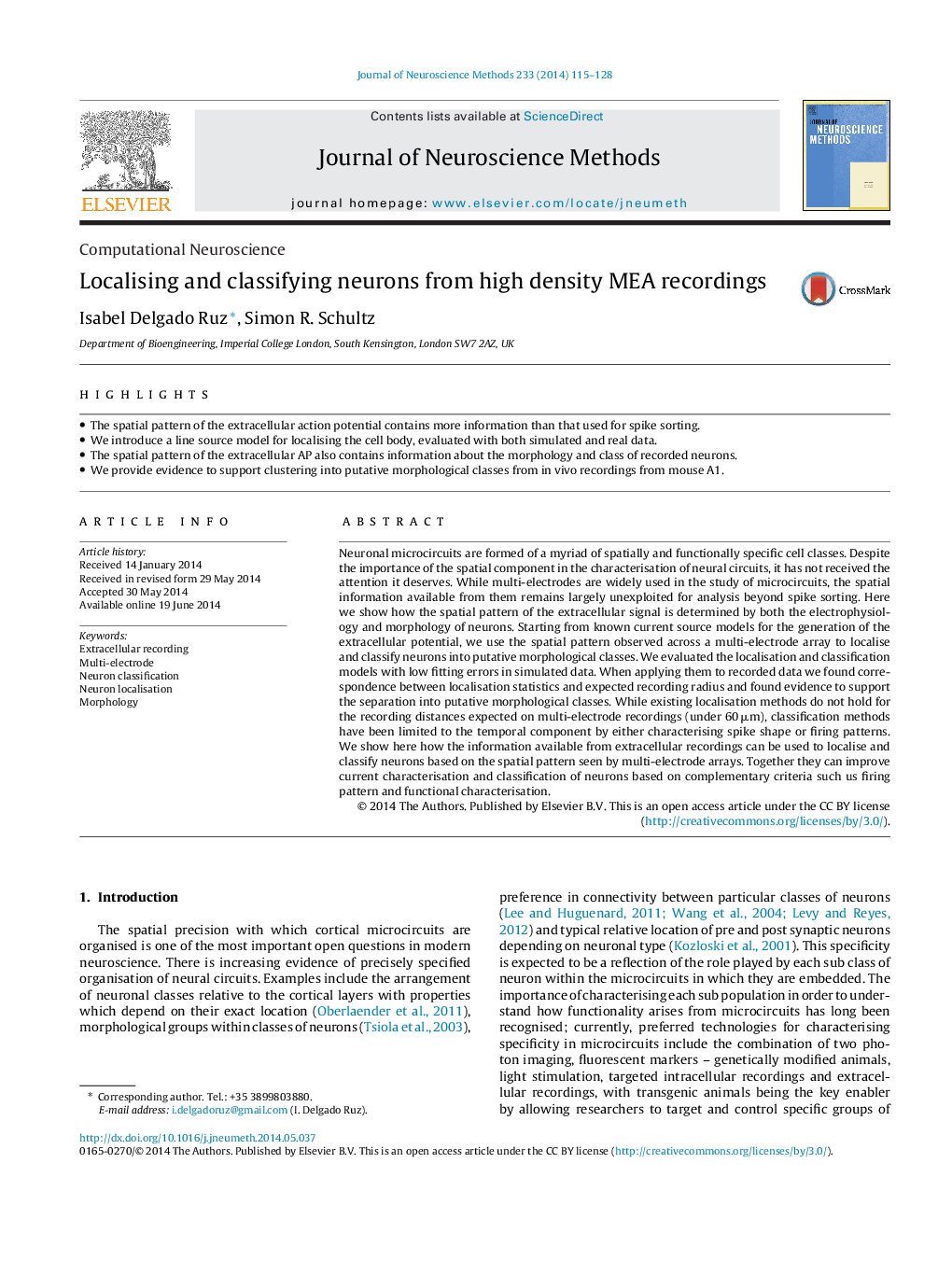| کد مقاله | کد نشریه | سال انتشار | مقاله انگلیسی | نسخه تمام متن |
|---|---|---|---|---|
| 6268493 | 1614636 | 2014 | 14 صفحه PDF | دانلود رایگان |

- The spatial pattern of the extracellular action potential contains more information than that used for spike sorting.
- We introduce a line source model for localising the cell body, evaluated with both simulated and real data.
- The spatial pattern of the extracellular AP also contains information about the morphology and class of recorded neurons.
- We provide evidence to support clustering into putative morphological classes from in vivo recordings from mouse A1.
Neuronal microcircuits are formed of a myriad of spatially and functionally specific cell classes. Despite the importance of the spatial component in the characterisation of neural circuits, it has not received the attention it deserves. While multi-electrodes are widely used in the study of microcircuits, the spatial information available from them remains largely unexploited for analysis beyond spike sorting. Here we show how the spatial pattern of the extracellular signal is determined by both the electrophysiology and morphology of neurons. Starting from known current source models for the generation of the extracellular potential, we use the spatial pattern observed across a multi-electrode array to localise and classify neurons into putative morphological classes. We evaluated the localisation and classification models with low fitting errors in simulated data. When applying them to recorded data we found correspondence between localisation statistics and expected recording radius and found evidence to support the separation into putative morphological classes. While existing localisation methods do not hold for the recording distances expected on multi-electrode recordings (under 60 μm), classification methods have been limited to the temporal component by either characterising spike shape or firing patterns. We show here how the information available from extracellular recordings can be used to localise and classify neurons based on the spatial pattern seen by multi-electrode arrays. Together they can improve current characterisation and classification of neurons based on complementary criteria such us firing pattern and functional characterisation.
Journal: Journal of Neuroscience Methods - Volume 233, 15 August 2014, Pages 115-128